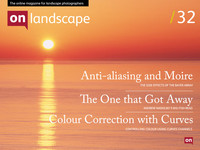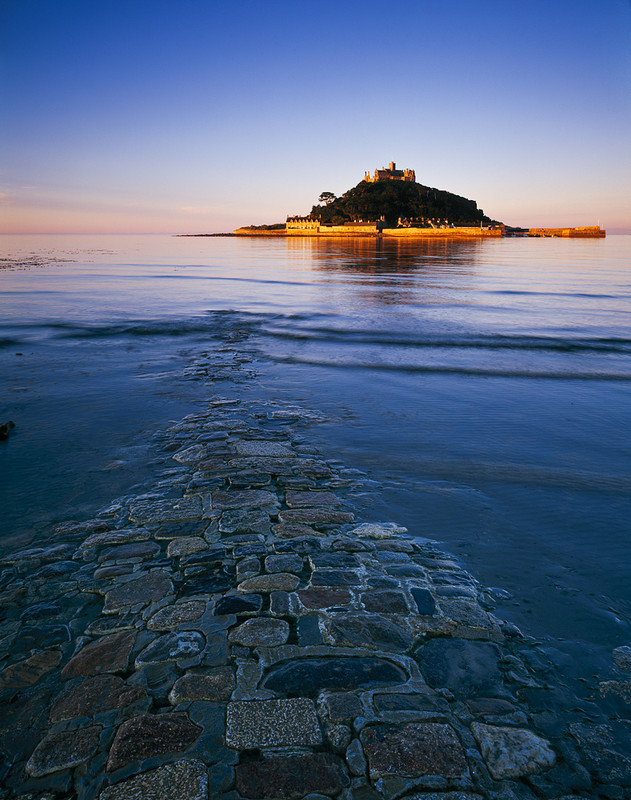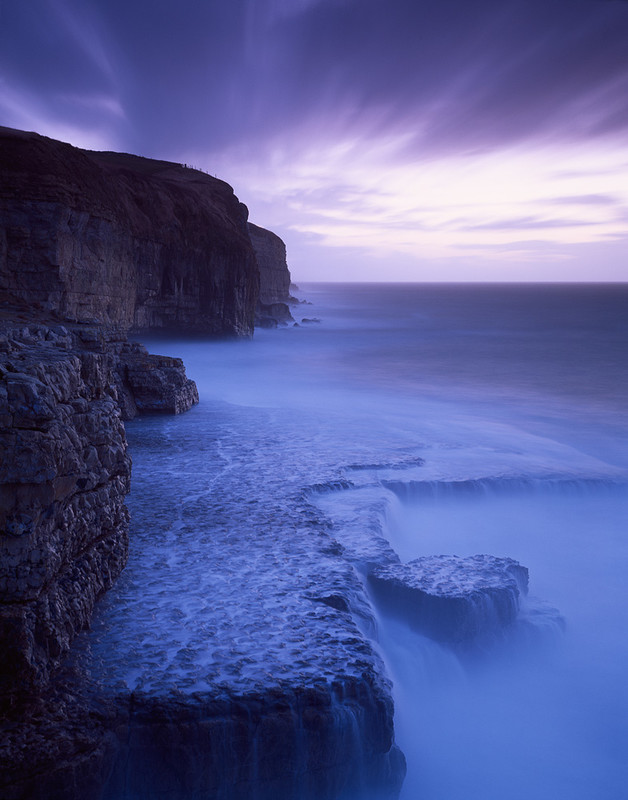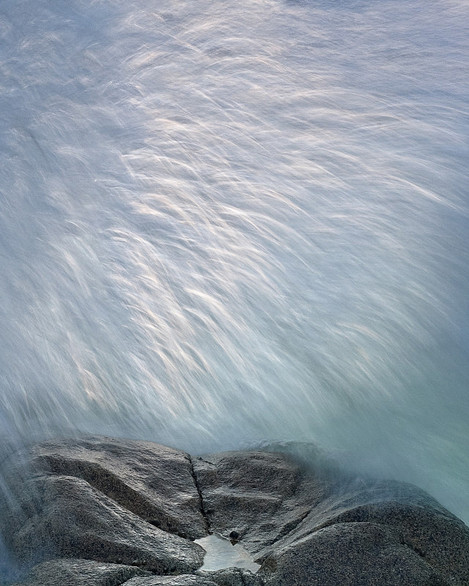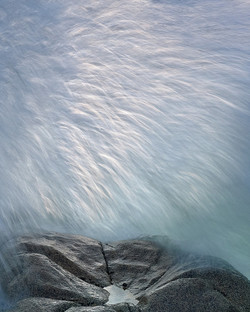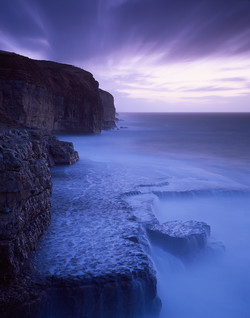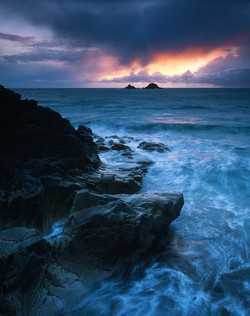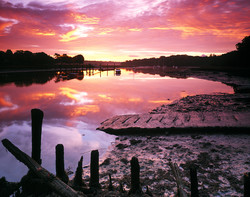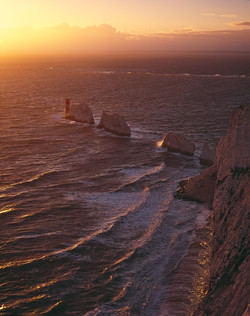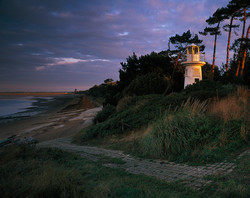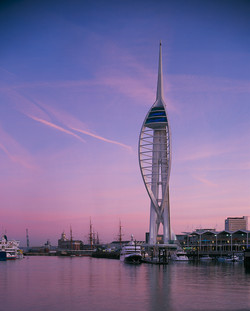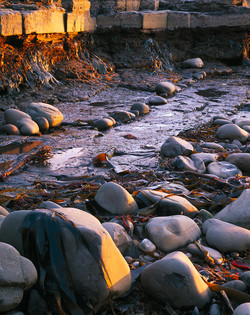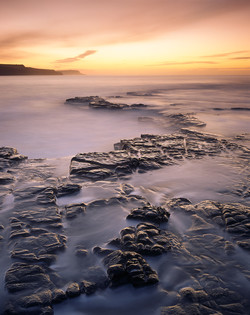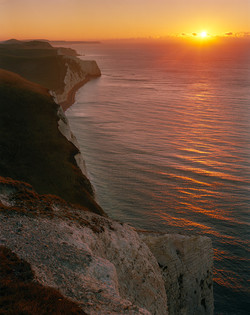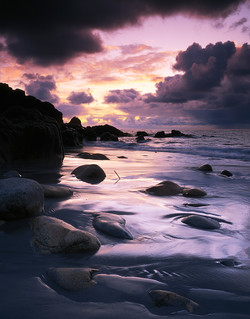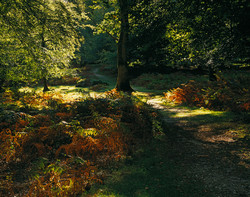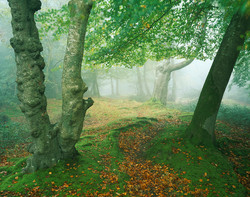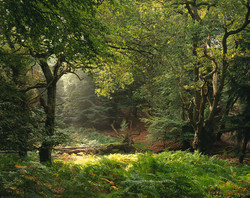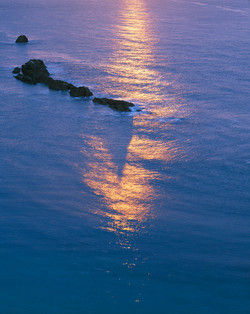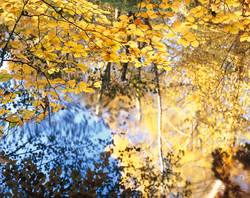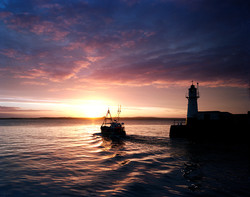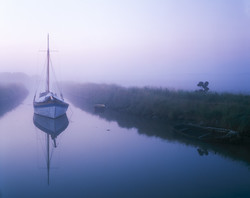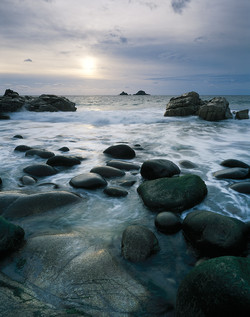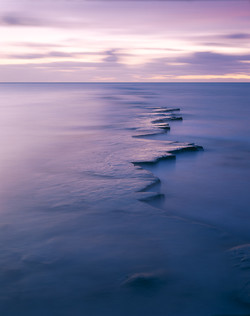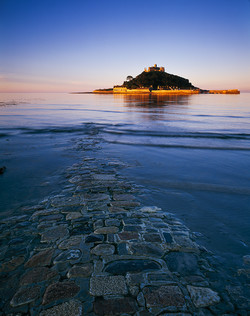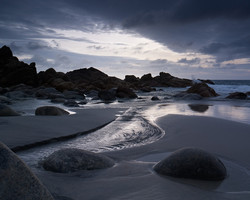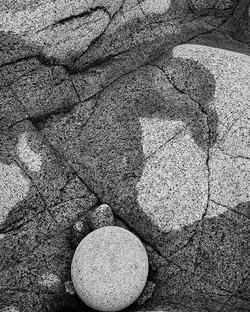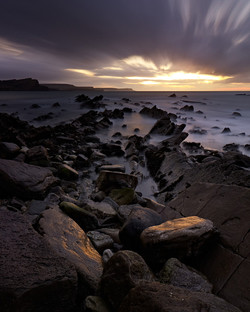Featured photographer

Baxter Bradford
I have a strong passion for photographing Landscape and Coast, but enjoy other commercial photographic work as well as providing tuition and occasional courses.

Tim Parkin
Amateur Photographer who plays with big cameras and film when in between digital photographs.
In this issue we’re talking to Hampshire/Cornwall based photographer Baxter Bradford whose prints from around the granite coastline and Kimmeridge I first saw whilst staying in the Mount Haven Hotel near St Michael’s Mount.
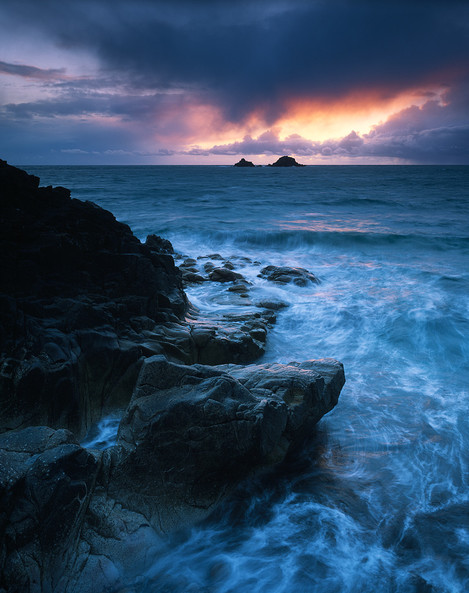 In most photographers lives there are 'epiphanic’ moments where things become clear, or new directions are formed. What were your two main moments and how did they change your photography?
In most photographers lives there are 'epiphanic’ moments where things become clear, or new directions are formed. What were your two main moments and how did they change your photography?
The first ‘moment’ is more of a protracted phase. I learned to slow down, somewhat by necessity as I tried to operate a second hand Bronica SQA on a tripod. This was just as the books and magazines say would happen, despite me thinking I was perfectly capable of hand-holding the camera. With this combination and a book I’d found in Waterstone’s of wonderful square landscape photographs by someone I’d then never heard of, called Charlie Waite the blue touchpaper was lit. I found an amazing internal motivation to do significantly better than I had with my Nikon SLR, this had been sold to help fund the SQA. I soon found that I was taking better family pictures on the Contax T2 too. About six months afterwards, my late father-in-law showed me his Gandolfi traditional 5x4 camera and tripod which the brothers had made in their Peckham workshop. We had a very funny weekend trying to take a few pictures with it near York. One of us read from a procedural checklist, whilst the other fumbled with the camera controls and keeping a darkcloth over their head. He suggested I borrow the camera for a few months. Initially my aim was not to be defeated by a wood and leather contraption. Having managed to get a place on a Joe Cornish L&L workshop at Bedruthan steps, he encouraged me to take it along. Things started to fall into place as I found how to make things work for me. That summer I bought an Ebony RSW off spec as it was the first batch and none had been seen.
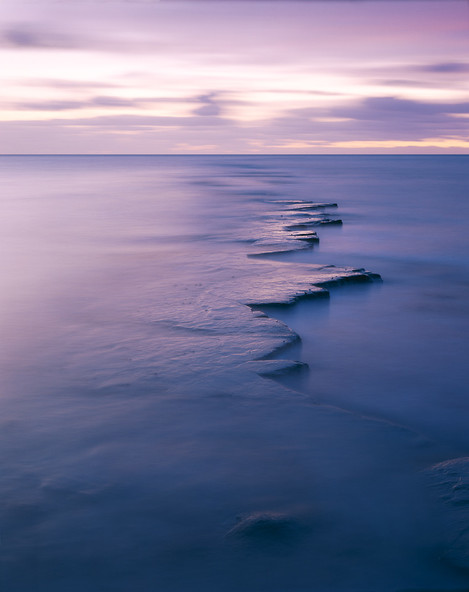 The second moment came as I was sitting in the audience of a camera club, with a judge talking about what was to me, the stand-out print of the evening. He said, ‘it’s a lovely image, but it just isn’t competitive photography’. The penny dropped. I didn’t want to be a competitive photographer, I knew what I liked and didn’t need to make images to please a camera club judge. Shortly afterwards I was lucky to arrange a deal whereby I sold my pictures at Habitat in Bournemouth and it seemed their customers were happy buying my non-competitive prints.
The second moment came as I was sitting in the audience of a camera club, with a judge talking about what was to me, the stand-out print of the evening. He said, ‘it’s a lovely image, but it just isn’t competitive photography’. The penny dropped. I didn’t want to be a competitive photographer, I knew what I liked and didn’t need to make images to please a camera club judge. Shortly afterwards I was lucky to arrange a deal whereby I sold my pictures at Habitat in Bournemouth and it seemed their customers were happy buying my non-competitive prints.
Tell me about why you love landscape photography?
It is an opportunity for me to get out to a location in our wonderful countryside, to observe the latent beauty and solve problems working with light, form and the technical issues that using a camera entails producing something original that looks elegant and coherent, yet with hidden, subtle content. I’m constantly seeking to find new ideas, interpretations and ways of seeing; even if I’m not often successful!
Could you tell us a little about the cameras and lenses you typically take on a trip and how they affect your photography
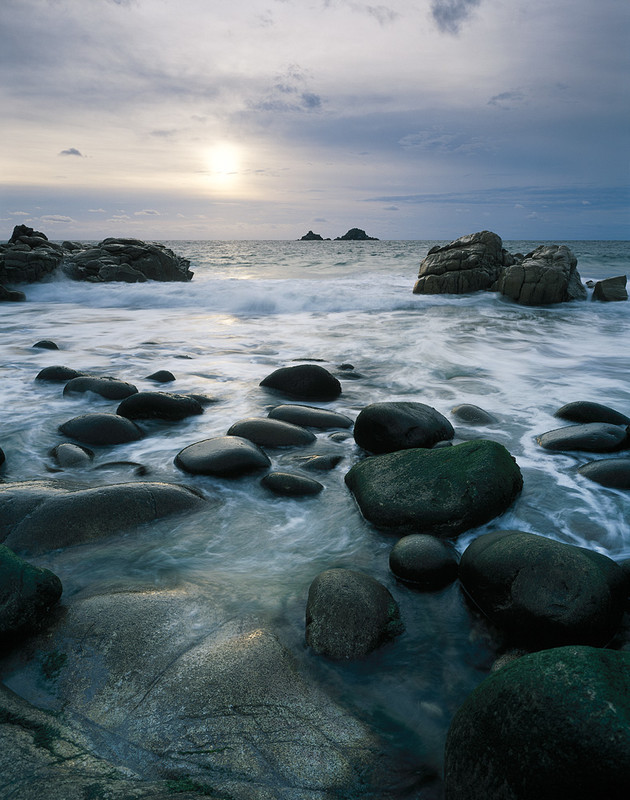 I have a Kata Bumblebee 220 bag which houses my Phase One 645DF, P45+ back and four lenses (28, 45, 80 and 150mm). There is also a set of Lee filters, holders and adaptor rings. These cover all my needs, though I would dearly love Phase One to release a tilt/shift lens or a windfall of cash for a Linhof Techno and 3 prime lenses…. Otherwise, I have a Lumix LX5 and a Nikon D7000 with 16-85 and 35mm f1.4 lenses. The latter I bought when I went to Hawaii last summer with my children. I couldn’t justify the risk and hassle of taking the expensive gear. The Phase One system is so easy to use that the other cameras are only used if I’m out with the children, on my bike or at a gig.
I have a Kata Bumblebee 220 bag which houses my Phase One 645DF, P45+ back and four lenses (28, 45, 80 and 150mm). There is also a set of Lee filters, holders and adaptor rings. These cover all my needs, though I would dearly love Phase One to release a tilt/shift lens or a windfall of cash for a Linhof Techno and 3 prime lenses…. Otherwise, I have a Lumix LX5 and a Nikon D7000 with 16-85 and 35mm f1.4 lenses. The latter I bought when I went to Hawaii last summer with my children. I couldn’t justify the risk and hassle of taking the expensive gear. The Phase One system is so easy to use that the other cameras are only used if I’m out with the children, on my bike or at a gig.
Investing in a high end digital system was quite a step - how has the experience been?
I started looking at the prospect of switching to MF digital 2 years ago taking delivery in the summer of 2010 following the sale of my LF film equipment. There have been many things to learn, but then that’s an integral part of my enjoyment of photography. I still laugh at my early errors with a 5x4 camera. Without camera movements, there are times when I need to focus stitch, usually, this is with the 80 or 150mm lenses. Occasionally, I realise that I’ll need to blend exposures, but find this process tedious, so have only done a few.
In terms of quality, I am extremely happy with the quality of the P45+ back and viewers haven’t been able to distinguish between P45+ prints and my LF film images which were scanned using my Imacon Flextight (soon to be for sale!). As such, I find it hard to believe claims that the P45 was at the bottom of the print pecking order in the recent test conducted for this website.
Tell me what your favourite two or three photographs are and a little bit about them.
One of them has to be this
First light – St Michael’s Mount
I was starting to love the Far West of Cornwall and a very early start on a tranquil summer morning saw me shoot a lot of film as twilight developed I moved up and down the beach. Soon the Mount was sunlit and I was the only one on the Causeway. It was taken on my Ebony 45SU with RVP50 and a 0.6 hard ND grad with possibly a 0.45 soft down over the water. The halo around the mount is entirely natural and this is a straight scan of the transparency. After taking this, I switched to landscape format and had sunlight on the causeway, but this made it too dominant and overpowered the Mount itself.
Two minutes at Dancing Ledge
This was my First visit to Dancing Ledge in Dorset. Paul Franklin had been previously and made a great image with light reflecting off the wet cliff. Having walked down in the dark, conditions were rather different. There was a strong F7-8 South-Westerly blowing and really loud crashing waves. Having set up my shot in near dark, the light meter pretty much read Zero. So I guessed I’d need an ND grad and placed it diagonally. The title comes from the exposure on RVP50 allowing for the one stop of reciprocity. This was my first long exposure image. I like the way the clouds have blurred, but most of all how serene it looks, a far cry of the reality of spray reaching 10m up.
Wavelight
This is from last year and marks a new direction for me. Made with the Phase One 645DF and P45+ with 150mm lens. It’s quite a crop from the full frame and I’d like to think of it as more than a happy accident. I could see this lovely light shining through breaking waves and wanted to see if I could photograph it. I’ve made many subsequent visits and not achieved anything quite as pleasing, but I’m getting better! The conditions needed are exacting, right tide, swell direction, with strong sun and little wind. This viewpoint is pretty precarious and I got a wet camera trying somewhere else.
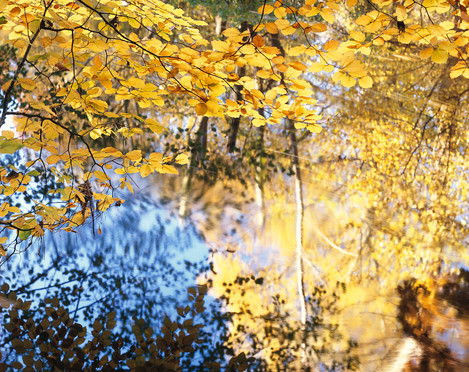 What sort of post processing do you undertake on your pictures? Give me an idea of your workflow..
What sort of post processing do you undertake on your pictures? Give me an idea of your workflow..
I like easy, in all walks of life, though sometimes this proves elusive. Where possible I still try to get things right when pressing the shutter, so use Lee Filters etc. I use Capture One for the RAW processing and have some basic adjustments which I make on import such as a slight contrast ‘S’ curve, metadata etc. Horizon gets levelled and I crop to 5x4 the vast majority of the time. Typically all I touch is White balance, default lens corrections and sharpness. Sometimes I alter saturation slightly (up & down) and use the advanced colour editor to tweak colours. Adjustment Layers are used to balance exposure that couldn’t be achieved at time of exposure with ND grads. For B&W I convert using Silver Efex Pro 2 and focus stitching is performed with Helicon Focus.
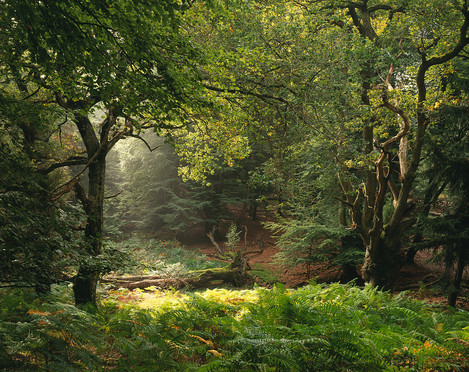 You have your prints exhibited in a few different locations in Cornwall, can you tell us a little about how you produce your prints and how you went about finding places to distribute them
You have your prints exhibited in a few different locations in Cornwall, can you tell us a little about how you produce your prints and how you went about finding places to distribute them
I print all my pictures myself using the workflow which I explained in Issue 7 on an Epson 7800 printer using predominantly Photo Rag 308gsm paper. I have been fortunate to make some good friends in Cornwall. I’ve gained their trust and so they see what I am doing and try to sell my pictures to help me pursue my quest to show aspects of their County at its best.
Tell me about the photographers that inspire you most. What books stimulated your interest in photography and who drove you forward, directly or indirectly, as you developed?
In the last few years, I’ve spent little time looking at photographic books, but have a reasonable collection. I tend to like quietness in pictures, Werner Bischoff, Josef Sudek, Alfred Eisenstadt, Michael Kenna and Yousef Khanfar. The humour of Elliott Erwitt appeals too. Andrew Nadolski’s End of the Land has been instrumental in developing my way of seeing. I feel privileged to have bought an Eve Arnold print of a Cuban woman in a bar with my LPOTY prize money. In terms of personal photographic development, I have been helped enormously by Joe Cornish and David Ward during their workshops and through their books. They have my utmost respect for their vision, skill level and motivation. I’ve thoroughly enjoyed the time spent in their company.
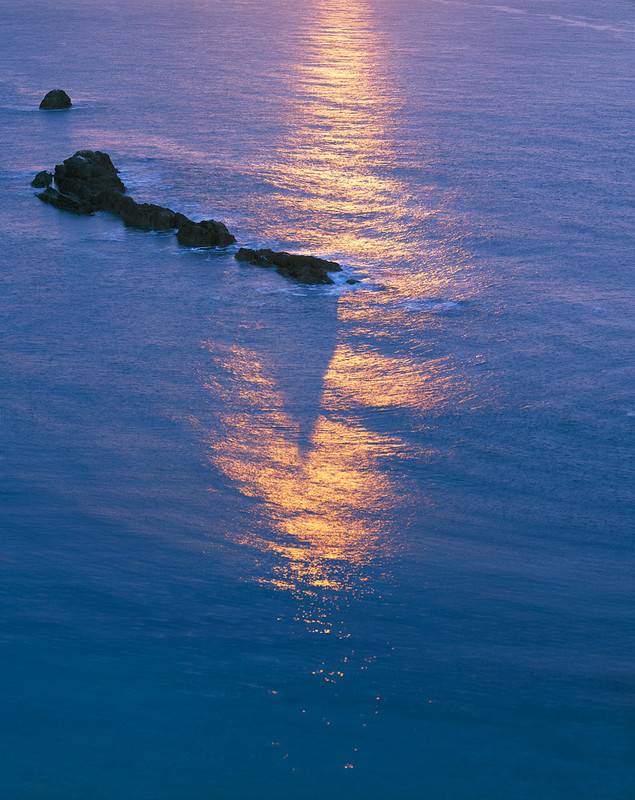 If you were told you couldn’t do anything art/photography related for a week, what would you end up doing (i.e. Do you have a hobby other than photography..)
If you were told you couldn’t do anything art/photography related for a week, what would you end up doing (i.e. Do you have a hobby other than photography..)
This is frequently the norm! As a single parent working full time teaching Maths, there are many weeks where I don’t touch the camera or feel the need to go out and make pictures.
I love doing a myriad of different things and am master of precisely none of them. When at my house at Sennen in Cornwall, I surf and walk on the beaches or cliffs. There’s always something to do. Here in Lymington, I am frequently out on my mountain or road bike, I also paddleboard and windsurf. When I’m feeling brave, the Tenor Sax comes out for a short blast. I’m currently trying to learn Pro Tools 10 software so I can help my children record their music in a spare bedroom. Photoshop was easy in comparison. The poor state of my garden is evidence of the neglect it experiences…
What sorts of things do you think might challenge you in the future or do you have any photographs or styles that you want to investigate? Where do you see your photography going in terms of subject and style?
I am increasingly being motivated to make images with waves. 'Wavelight' has inspired me to try to do a series. Despite the difficulties, or perhaps because of them, I feel that I must see if I can realise the potential that is inherent in this type of picture. It may mean that I need a waterproof housing and to use a tripod and wetsuit.
Who do you think we should feature as our next photographer?
Paul Whiting is always coming up with wonderful new interpretations. If we go shooting together we end up with very different images. Matt Sampson also has a fantastic way of seeing images and creating superb artistic prints.
Thanks to Baxter for a great interview and if you want to see more pictures, take a look at his website, Flickr stream or Facebook page.

